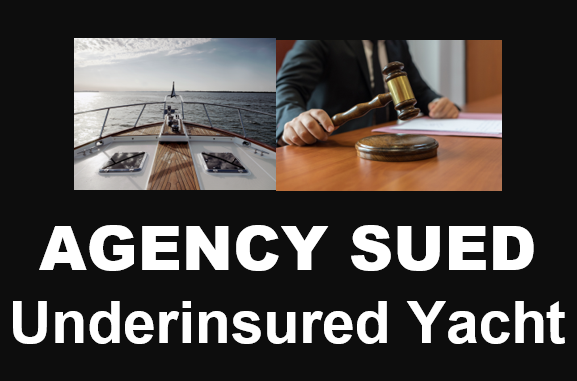
A Louisiana agent told his client that he would get higher insurance limits on a yacht. That didn’t happen, and the long-time client sued his agent.
The insured had worked with the same agent for decades. In late 2016, he bought a yacht for $125,000. He then spent an additional $75,000 on renovations and upgrades to the vessel. In the meantime, he asked the agent to obtain insurance on it. In February, the agent obtained a hull insurance policy with a limit of $200,000.
That summer, the yacht suffered a mechanical failure and needed extensive repairs. The insurance policy covered losses caused by mechanical breakdown, and the insurer paid for the loss. The insured then undertook another series of renovations and upgrades, including the purchase of new engines at a cost of $165,000.

The following winter, the insured discussed the yacht’s enhanced value with the agent. They agreed to renew the current policy in February to buy time to look for increased coverage. For reasons not stated in the appellate court’s written opinion, the insured did not receive a copy of the renewal policy until April. It provided the same $200,000 limit.
That autumn, the yacht sank while docked and incurred “catastrophic damage.” The opinion did not say, but presumably the insured received the $200,000 policy limit for the loss. A year after the sinking, he sued the producer, his agency, and the insurer for failing to obtain coverage with the increased limits he discussed with the agent in the winter of 2018.
The following summer the defendants asked the court for summary judgment (meaning that the facts were not in dispute and they should receive judgment in their favor based on the law.) They argued that there had been no breach of a legal duty; that the lawsuit missed the deadline set by the state’s statute of limitations; and that the insured’s damages should be capped at $200,000 in any case. The trial court disagreed about the facts not being in dispute, but did rule that the deadline for filing the lawsuit had passed. The judge dismissed the case and the insured appealed.
The statute of limitations limited the time for suing an insurance agent to one year “from the date of the alleged act, omission, or neglect, or within one year from the date that the alleged act, omission, or neglect is discovered or should have been discovered.” The agency and carrier argued that the one year period started in April 2018, the day the insured received the renewal policy with the $200,000 limit. That would mean that he had to file the lawsuit by April 2019. However, he did not file until the following November.
In late 2021, the appellate court found otherwise, noting that the insured and agent had agreed that the $200,000 renewal was a stopgap measure until the increased limits could be obtained. Receiving that policy would not have notified the insured of the agent’s failure to obtain additional coverage. Instead, they wrote, “this letter would have led Mr. Theriot to believe that the plan was moving forward.” Rather, “there was no triggering event prior to the sinking” that would have alerted him to the agent’s failure. Therefore, the earliest he could reasonably have known was the date of the sinking, less than a year before he filed the suit.
The court sent the case back for trial. The agency’s E&O liability insurance carrier likely settled at that point.
We don’t know whether the agent simply forgot to follow up on the higher limits or if he tried to get them, was unsuccessful, and did not notify his client. In most states, an insurance agent has a legal duty to obtain the insurance the client requests or to inform the client of the inability to obtain it. Since the insufficient coverage came as a surprise to the insured after the sinking, this agency apparently did not inform him of anything.
The lesson: Give your clients regular, accurate communications about the status of their insurance requests. Some requests are impossible to fulfill; in those cases, inform the insured clearly. Lack of communication came back to haunt this agent.












